Where are the turtles in cold months?
As ectotherms (or cold-blooded animals), turtles’ body temperature and metabolism are determined by external heat sources. When it’s cold enough outside, their metabolism slows down, so they aren’t active enough to forage.
Where do they go and how do they survive in cold winter weather? Turtle species exhibit a variety of incredible adaptations that allow them to live through extreme weather conditions.
While turtles, tortoises, and terrapins deal with winter in a variety of ways, undoubtedly the most extreme survivor is the painted turtle (Chrysemys picta). Let’s look at what makes the painted turtle the king of winter.
Painted turtles spend most of their time in ponds and slow-moving freshwater and a sheet of ice doesn’t stop them, it only slows them down. Even in the northernmost parts of their range, adults will overwinter under ice, sometimes buried up to 45 cm in the mud beneath the water.
“Sometimes when a pond freezes, you can see the turtles sitting on the bottom. If you cut through ice you’d think they were dead,” says Kurt Buhlmann of the University of Georgia. “It would take hours for them to move.”
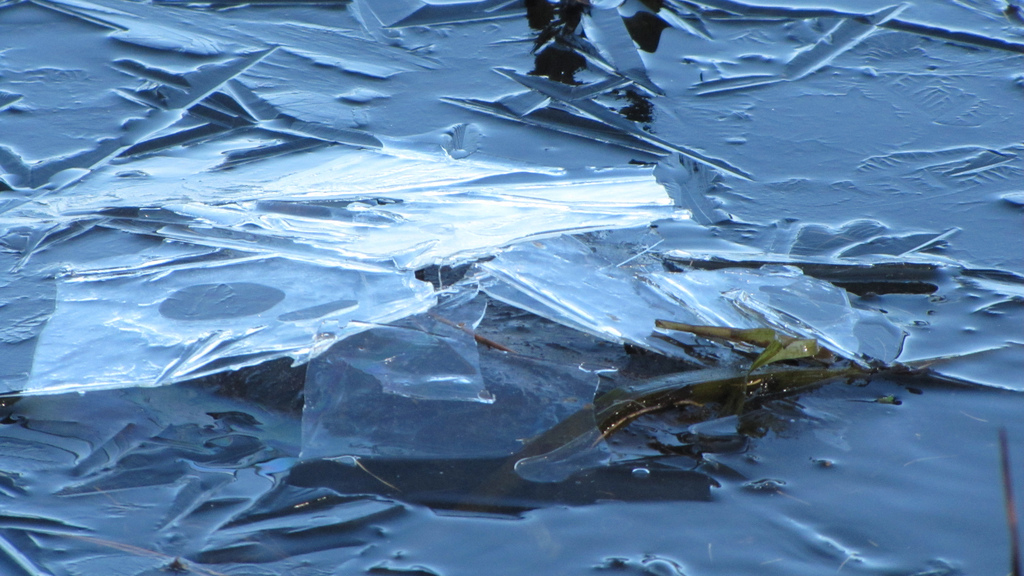
Hatchling painted turtles emerge from their eggs in Autumn, but stay underground in the nest (on land) for the winter and emerge in the spring.
Lab experiments have shown that adults can survive for more than 100 days in water at 3°C without food or oxygen. In the wild, some northern turtles are dormant for up to six months, however, the conditions are variable – so they may have access to oxygenated water for part of the winter.
Painted turtles exist and survive in landscapes where winter temperatures can reach sub-zero temperatures.
How Do They Survive?
Painted turtles’ super survival powers rely on a system of adaptations and fallback plans.
At freezing temperatures, as low as -2°C, hatchling painted turtles in their nest can supercool (reach a freezing temperature without any crystallization) and remain in that state for about 3 days, possibly for longer and at lower temperatures if the soil is dry and they are desiccated. Most hatchlings studied in the lab recovered rapidly when warmed. If supercooling fails, for instance in moist soil, hatchlings may freeze (and crystallize), but if they are not frozen too long or at too low a temperature they are still able to thaw and recover.
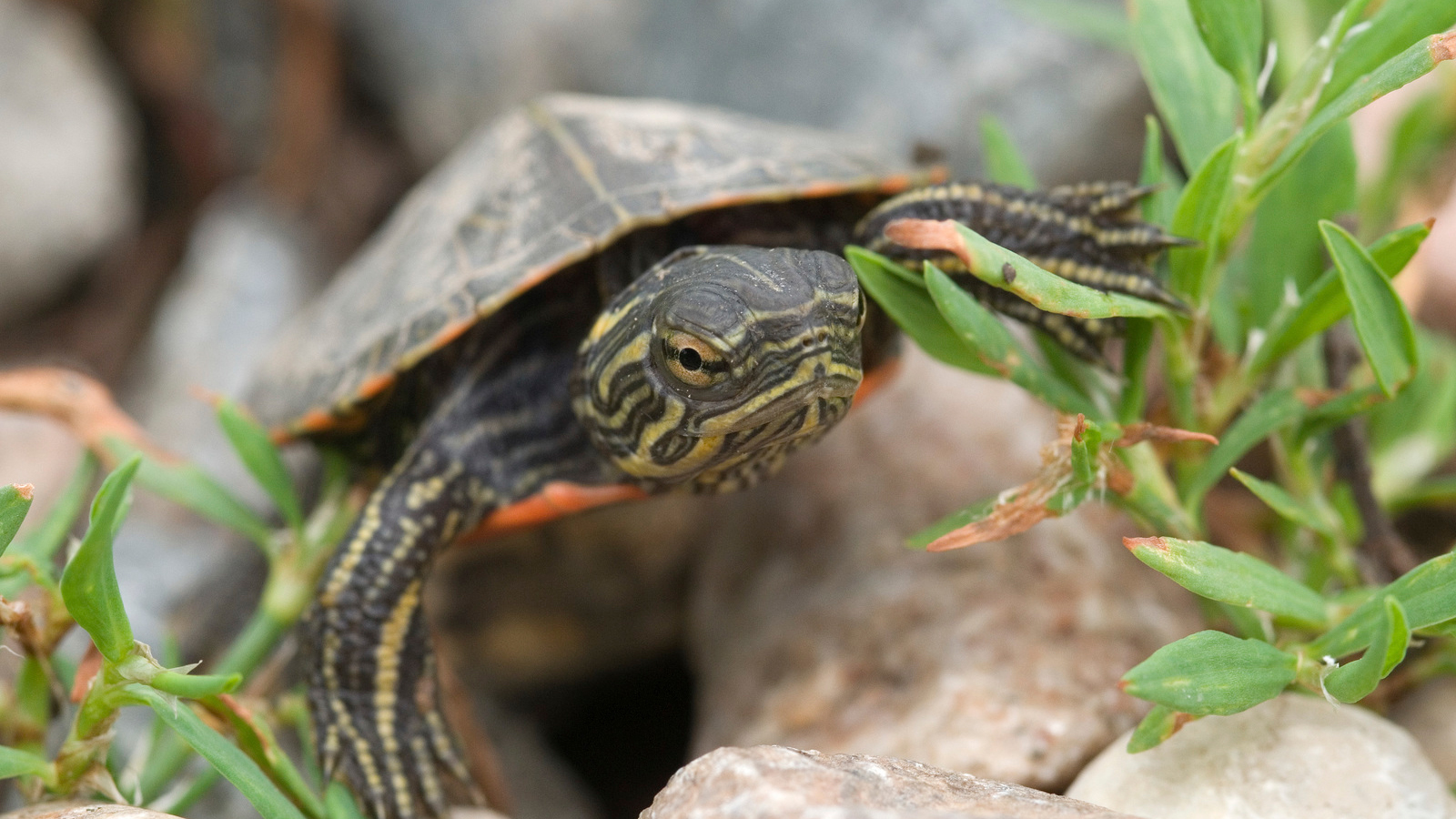
Like all turtles, painted turtles have lungs and during warm months they get most or all their oxygen by breathing air. However, while submerged for the winter, they can absorb some oxygen through their skin, mouth and cloaca. Even more impressive, painted turtles can hibernate for months in hypoxic (low oxygen) and anoxic (no oxygen) environments. Most vertebrates can only live a matter of minutes without oxygen (the heart and nervous system fail).
The reduced metabolic rate of the painted turtle in winter — which is down from their normal metabolic rate by as much as 95% with access to oxygen and as much as 99% when there is no oxygen available — is, surprisingly, the key to their survival. Although it prevents them from being active, the low metabolic rate also reduces their energetic needs to a bare minimum, allowing them to survive without food or oxygen.
When I think of hibernation, I immediately think of bears – which rely on fat stores to get them through their winter dormancy. Fat stores, however, can only be used when oxygen is plentiful. To survive without oxygen, painted turtles break down glycogen. This process releases enough energy to keep them alive but also creates lactic acid, which can build up enough to be deadly (acidosis).
Painted turtles survive by changing their blood chemistry – borrowing materials from their skeleton and shell to balance out the acid. They can also store some of the lactic acid in their skeleton and shell.
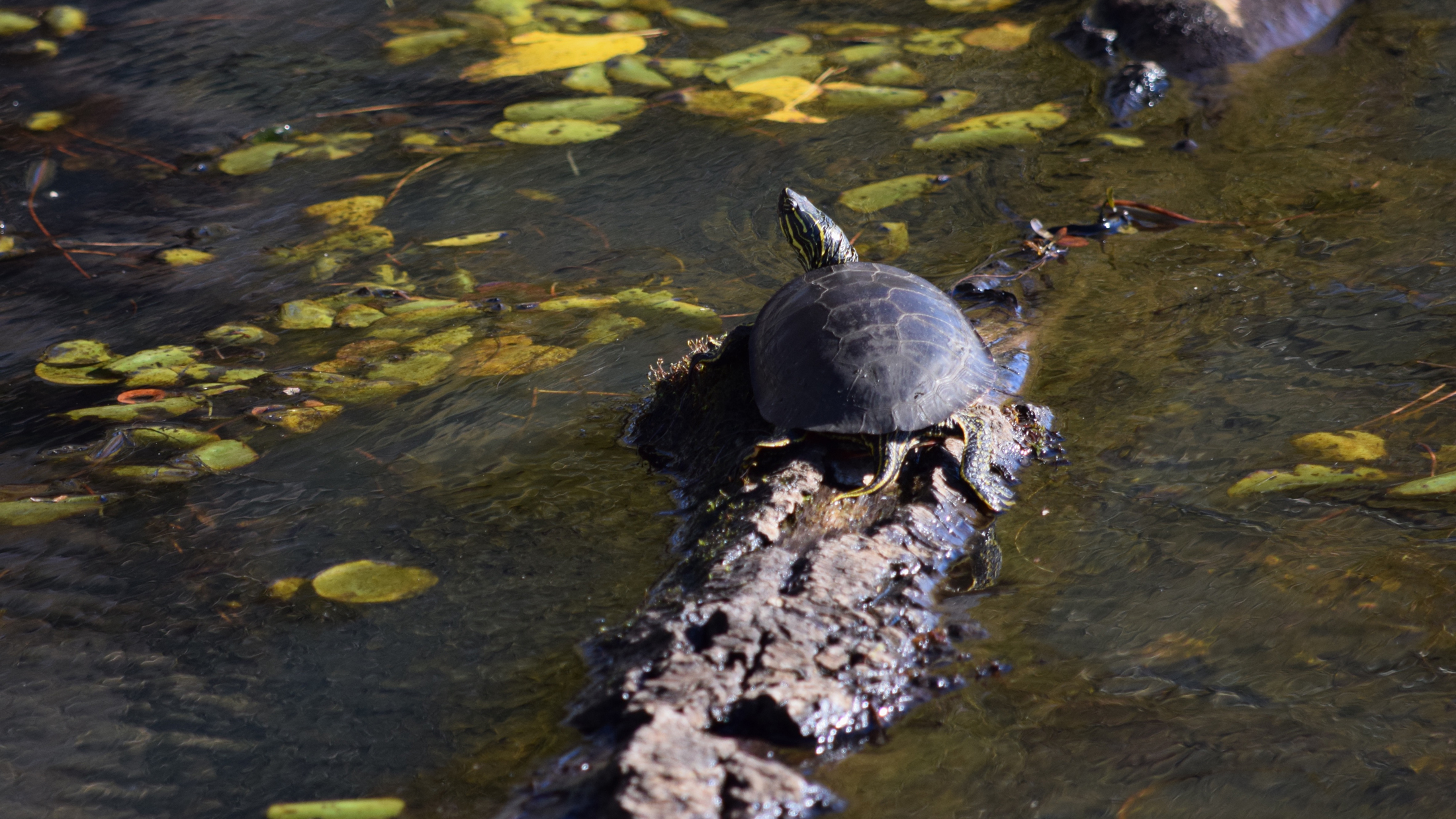
Counterintuitively, painted turtles would not be able to survive if trapped underwater without oxygen in warm water. For instance, aquatic turtles of all species, from painted turtles to sea turtles are subject to drowning when trapped underwater in fishing nets. Their metabolism is elevated as the water warms, increasing their energetic needs and therefore the amount of acid that builds up in their system, overloading the turtles’ safeguards.
Winter Conservation Needs
Sometimes you can see turtles under the ice. If you do, enjoy observing them, and know they are fine. Please don’t break the ice!
The ice provides a buffer between the turtle and the colder air above, if you pull them out they might freeze. There are limits to their ability to survive in freezing temperatures and you may unintentionally harm their chance at survival.
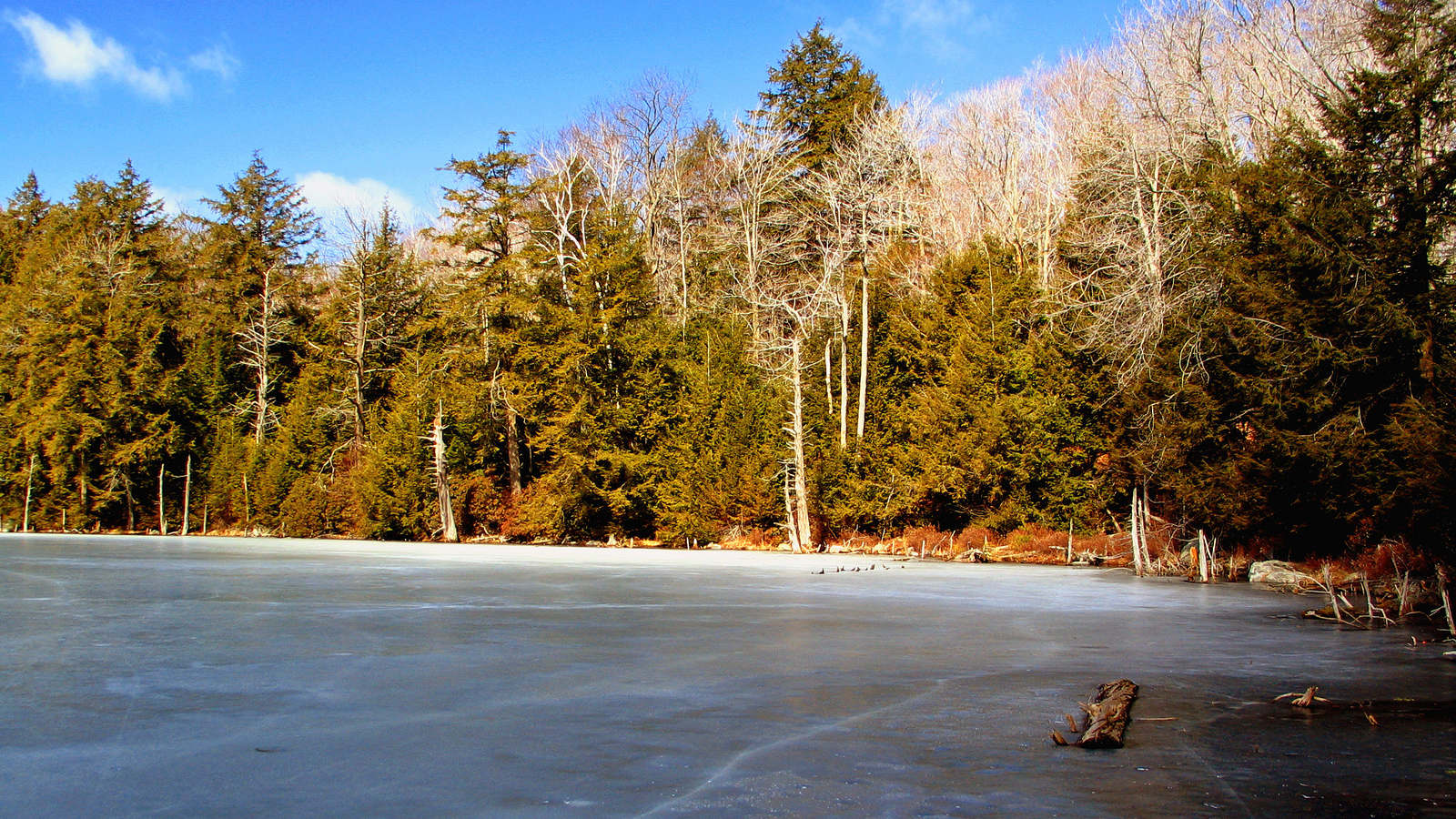
You can also advocate for the protection of the ponds, lakes, and streams that these turtles call home year round.
“One critical thing for overwintering turtles in ponds and wetlands,” Buhlmann explains, “don’t change water levels in the middle of winter. If wetlands are managed for waterfowl and the water is drained because the birds are gone, the hibernating turtles sitting on or in the mud are exposed to freezing temperatures and it will kill them. So, if you change water levels in a wetland where turtles are known residents, you need to plan it out so that it’s safe for turtles. Think about making sure wetlands aren’t drained completely, and avoid the seasons of greatest temperature extremes.”
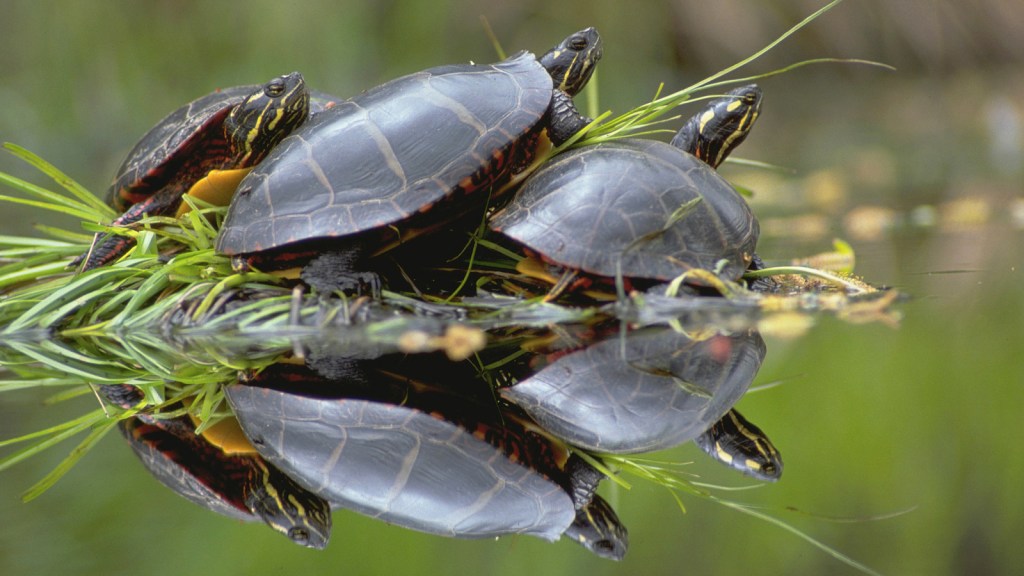



Neat. I’m in Ohio. In my youth, while trapping muskrats, I observed an 8 lbish snapping turtle that was active on the bottom in 5 ft of water under 6 inches of clear ice on a small local pond on two different occasions. Based on size, I assumed it was the same turtle both times. The pond had undercut banks and we watched the turtle go under the bank one time. At the time, I guessed there were air pockets under the bank. There were also a lot of air bubbles on the underside of the ice from muskrat activity. (That’s one way we would locate active dens.) Came across an active 5 lb snapping turtle during December on an open water local river once.
Saw a dead 6″ painted turtle (it was upside down and neck and legs were sprawled out) under clear ice in a 10 ft deep section of a local gravel pit once. There was an obviously dead leopard or green frog in the same area. I had previously seen an active green or leopard frog in the same area once. No visible air bubble under ice.
My wife and I watch a documentary on turtles.. The Reptiles of Our World .. On Turtles .. and it said Painted Turtles hearts can stop in freezing weather. I know they slow way down as much 99%.
Some call me The Turtle Man because I love Turtles and love saving them. I can’t find any info that says their heart can stop.
Please advise.
I have a rubber-lined pond with some sediment in it. Plants include iris, cattails, and submerged water Lilly. I currently have a painted turtle, possibly two, living in it. Would they be able to survive the winter in this environment, or do they need more mud in which to bury themselves?
Let me know. I look forward to hearing from you!